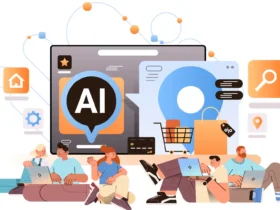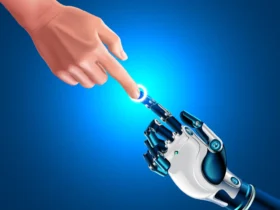With the recent surge in AI innovation, spurred by OpenAI’s release of its groundbreaking generative AI model, AI-powered assistants are becoming an increasingly familiar part of our daily lives. These digital companions are evolving rapidly, crossing over from commercial applications to household use and hinting at even bigger possibilities for the future.
So, what’s next? As virtual assistants continue to expand their capabilities, what new roles might they take on? Let’s look at how these assistants have developed over time, where they stand today, and what the future might hold for this fast-evolving technology.
How Virtual Assistants Have Evolved Over the Years
The concept of a “virtual assistant” initially relied heavily on human workers. As the internet grew, so did the gig economy, enabling people around the world to offer remote assistance for tasks like scheduling, email management, and customer service. Online freelancing platforms are still full of virtual assistants offering these services, making the role accessible and flexible for both workers and businesses.
With advancements in technology, digital companions moved from human-based assistance to AI-powered models like Siri, Alexa, and Google Assistant, which began appearing on smartphones and smart devices. These early AI-powered assistants were limited, primarily capable of handling simple tasks such as setting timers, checking the weather, or playing music—usually within the constraints of their respective devices’ ecosystems.
However, the development of large language models (LLMs) and powerful natural language processing (NLP) systems has taken virtual assistants to a new level. Generative AI models like OpenAI’s ChatGPT have demonstrated far more sophisticated conversational abilities, while specialised tools like Microsoft’s Co-Pilot offer productivity-focused assistance tailored to professional environments. Niche applications, such as Socratic (designed for students) and Wally (for finance professionals), are further examples of how AI-powered assistants are branching out to meet specific needs.
These tools make it possible for people to experience some of the benefits of having a personal assistant without the cost of hiring someone full-time. However, the current generation of digital companions still has limitations and can’t yet take on every task required of a human assistant.
But that might not be true forever…
The Future of Virtual Assistant AI: What’s Next?
As AI technology advances, we can expect AI-powered assistants to become even more capable and versatile. They’re likely to expand further into professional and personal roles, helping with complex tasks such as managing workflows, scheduling across time zones, and even providing personalised insights into health and wellbeing.
One of the biggest hurdles, however, is the development of a truly “strong” AI—an assistant that can understand context, follow instructions flexibly, and adapt to new tasks with a level of intelligence comparable to a human. Current AI models, including OpenAI’s, are incredibly powerful but remain fundamentally limited in scope. They rely on processing large datasets and generating responses based on patterns in that data, rather than possessing any true understanding or independent thought.
The journey towards a fully autonomous, contextually aware virtual assistant is still ongoing, and achieving this level of sophistication may take years. In the meantime, the recent advances we’re seeing are already transforming how we work and interact with technology. AI-powered assistants can support busy professionals, offering a helping hand to those who can’t afford a full-time human assistant. They’re also valuable tools for human assistants, enabling them to work more efficiently and focus on higher-level tasks.
Looking Ahead: Opportunities and Challenges
The future of AI-powered assistants holds immense potential, but it also raises questions. As these tools become more integrated into our lives, there will be ethical and practical considerations around privacy, data security, and the boundaries of AI autonomy. How much control should we give to a digital companion? And what safeguards need to be in place to prevent misuse or over-reliance?
Moreover, the development of more intelligent AI assistants could have a profound impact on employment in certain sectors. While AI can enhance productivity and free up human workers to focus on more meaningful tasks, it could also displace jobs traditionally performed by human assistants. Balancing innovation with ethical responsibility will be essential as we navigate these changes.
In Summary: Just the Beginning for AI-Powered Companions
The evolution of AI-powered assistants has been impressive, but we’re still just scratching the surface of what’s possible. As AI continues to improve, virtual assistants are set to become smarter, more versatile, and more deeply embedded in our daily routines. Whether they’re helping us at work, supporting our personal lives, or even assisting with health and wellness, the next generation of digital companions will play an even more significant role.
The virtual assistant industry will undoubtedly continue to evolve, creating tools that are more intuitive, comprehensive, and capable than ever before. But will AI ever truly take over the role of a human assistant? Only time will tell. For now, AI-powered companions are here to support and enhance our lives—without entirely replacing the human touch.









Leave a Reply